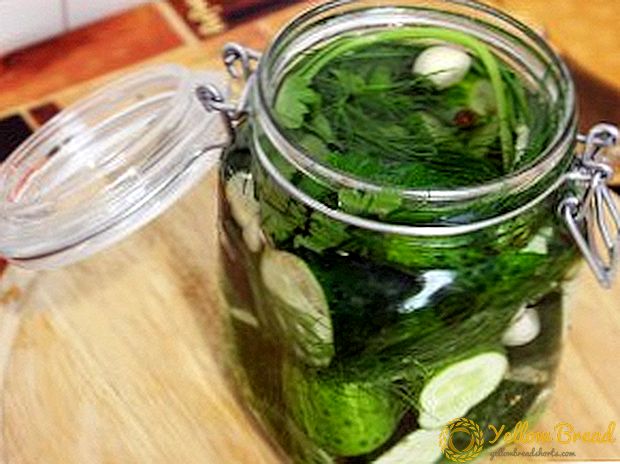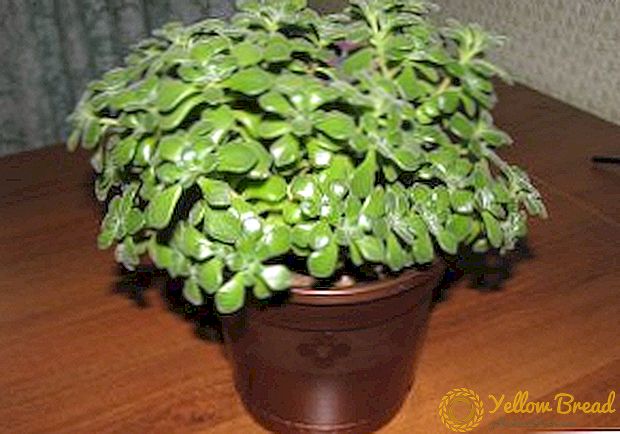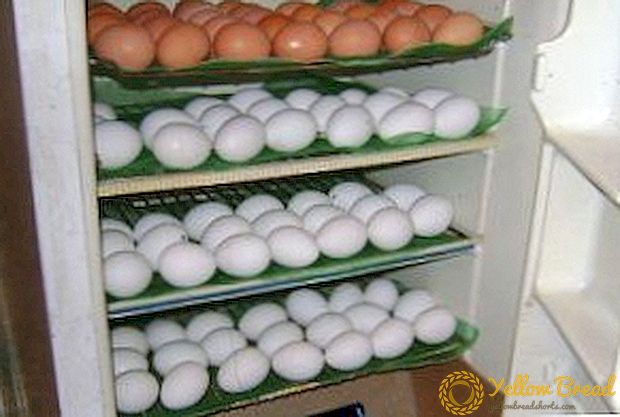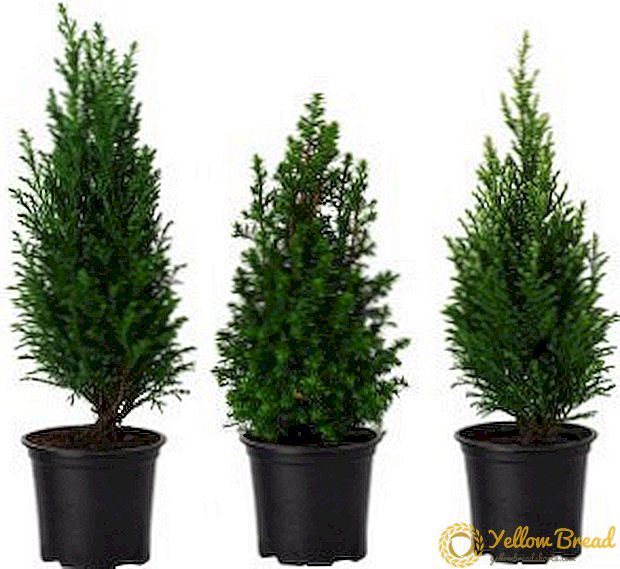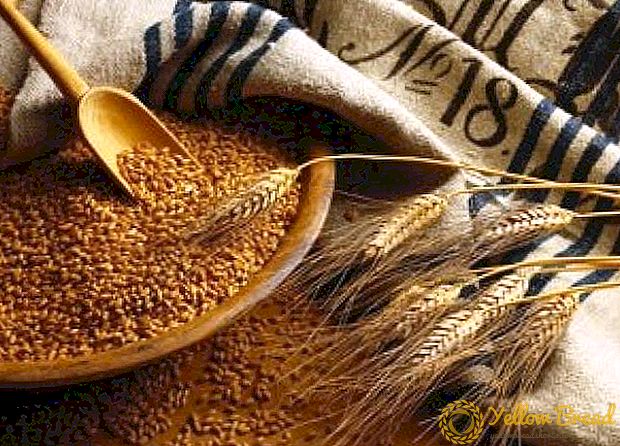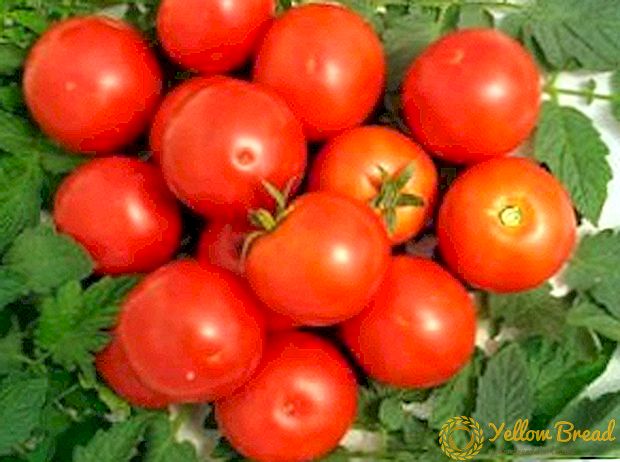
Before you buy another package with the cherished seeds of cucumbers, you need to carefully study the properties of a particular variety.
After all, not every bush will be able to withstand not quite comfortable Siberian climate.
As for cucumbers, this culture loves light and heat very much.
But the modern selection has so rushed forward that a huge number of varieties of this representative of the pumpkin family have already been created, which can withstand any changes in weather conditions even in such an area as Siberia.
Therefore, if you want to plant just such stress-resistant and unpretentious, cucumbers, then these varieties will fit you.
Sort "Altai"

This variety is widely known for Siberian gardeners due to its unpretentious care and resistance to climate change. "Altai" is an early ripe variety that matures in 35 to 38 days. It is thanks to the bees that pollinate the flowers of these bushes, he fructifies.
Gardeners grow it in open ground and in greenhouses. The shrubs of this variety are medium-length, up to 1.2 m in length. Medium-sized fruits (about 9 - 10 cm), gain 85 - 90 g in weight, with a typical shape for cucumbers - oval-cylindrical, bright green, with great taste without bitterness. The peel of these cucumbers is covered with tubercles, the tips of which have a white color.
Housewives know that this variety showed itself well in canning, as these cucumbers can be rolled up in small banks. Also, these fruits can supplement the human diet and fresh.
This variety is resistant to most known diseases of cucumber. Yield is approximately 5 - 6 kg per square meter.
In the climatic conditions of Siberia, it is undesirable to sow the seeds immediately into the ground, even if they are planted in a greenhouse.
Therefore, the bookmark seed can be done from early April to early May. The depth of the laying should be approximately 1.5-2 cm. The air temperature at which the seeds are guaranteed to germinate should be approximately 23-25 ° C.
Also, seedlings need to be watered and fed. When transplanting into the ground on 1 square. meter, you can prikopat at least 3 seedlings. Also the seeds will benefit from the use of growth stimulants. To do this, you can purchase any suitable drug for this purpose and use according to the instructions.
Since this variety is quite hardy and unpretentious, it will endure small hitch, for example, in watering. Water bushes follows warm water once a week. Be sure to loosen and mulch the soil, so as not to form a crust that will interfere with the roots "breathe."
Polyethylene film or straw can be used as mulch. Straw, of course, is better, since this organic material will not create a lasting greenhouse effect, as a film would do. Under the influence of such a microclimate, the roots may simply start to rot due to excess condensate. The straw will gradually decompose and so will become an excellent organic fertilizer.
It is also important to treat bushes with fungicides when the first signs of the disease appear.
Variety "Miranda"

Early parthenocarpic hybrid of universal purpose. Take root in any soil. Bushes vigorous, with a large number of large leaves, 1 - 2 ovaries are formed in one node. Fruits of medium size, 11–12 cm long, weighty (110–120 g), cylindrical in shape. The peel is covered with small tubercles of white color.
The very color of the fruit is very interesting - the whole cucumber is saturated green with a large number of white specks, and yellow stripes form up to the middle of the cucumber. The flesh is very juicy, sweet, with a great aroma.Add a wonderful taste to any salad, in themselves very tasty and fresh, and canned or pickled.
Sort frost resistantand is not affected by the majority of cucumber diseases, including powdery mildew.
You need to start with seedlings, planting which is best done in mid-April. Toward the end of May, seedlings can be instilled in a greenhouse or in the ground. By that time, seedlings should "sit" in pots for at least 30 days. When planting seedlings, the soil should warm to a temperature of at least 14 - 15 ̊C.
If you do not plan to create a support for the bushes, then on 1 square. meter, you can plant 3 - 4 seedlings.
If trellis cultivation is assumed, then it is better to prikopat 2 - 3 plants per unit area. The soil for this variety of cucumber should be sufficiently fertile and well aerated. Therefore, it is better to apply various fertilizers to the ground in autumn, as well as to add sawdust, which will contribute to a stronger blowing of the earth.
Regular watering 2–3 times a week with hot water is important. If the weather is rather rainy, then the amount of watering should be reduced so that no excess moisture is formed in the soil.Check whether the land needs water, easy enough. You need to take a handful of earth in your hand and squeeze, if the soil crumbles, then you need to water the bushes. If a coma is formed, then moisture is sufficient.
Sure to fertilizewhich will enrich and saturate the soil with all the necessary trace elements. If the bush is actively increasing the vegetative mass, and the fruits are not formed, then you need to pinch the plants. Then the process of fruiting will begin.
Variety "Brigantine"

Was launched in Siberia. Bee pollinating hybrid, with a short maturation period (40 - 45 days). Indeterminate shrubs, branching in a moderate degree, the leaves on the shoots are also not very much.
The leaves themselves are medium in size, bright green. Fruits of medium size, 12-13 cm long, in weight gain 85-95 g, cylindrical-elliptical shape. The surface is lumpy, the ends of the tubercles are white. The flesh and rind are green, but the skin has light green stripes.
High yield, about 9 - 10 kg with 1 square. meter beds. Cucumbers of this variety have a great taste not only fresh, but also in pickled or canned form.
Bookmark seeds need to do in early May. Bookmark depth is standard. Care of seedlings is regular watering, fertilizing, as well as picking after the appearance of the second leaf on the shoot.
It is possible to replant seedlings in the ground from the end of May to the beginning of June. Between adjacent beds there should be a distance of 50 cm. For 1 square. a meter of land can be planted 3-4 seedlings. After the end of the transplant, it is advisable to water the ground and cover it with mulch.
If the probability that the weather will deteriorate is great, then it is better to cover the saplings with transparent polyethylene until the warm weather is established.
The care consists of regular watering with warm water, and the interval between them should be about two days, since this variety is in need of moisture. Immediately after you prikopali seedlings, they need to pour abundantly with warm water, and after the moisture is fully absorbed, the earth should be loosened.
It happens that the bushes are beautiful and green, but do not bloom or do not bear fruit, then you need to slightly prune the shoots from the ends. Then the fruits will begin to appear. To harvest you did not disappoint, you need make organic and mineral fertilizersthat actually give plants extra strength to grow and bear fruit.
Sort "Mig"

Middle-early variety, begins to bear fruit at 42 - 45 days after the emergence of seedlings. Bushes are sprawling, vigorous, powerful, medium-rich. The fruits are elliptical in shape, with a small number of tubercles, at the ends of which are small black spikes.
Cucumbers are quite long (12 - 20 cm), quite weighty, the mass reaches 200 g, they have great taste. The yield is 3 - 6 kg per square meter. meter After removal from the bush, the fruit does not fade for a long time and retains its coloring.
The variety has proven itself well not only fresh, but also in canning and pickling. The duration of the fruiting period is 2 - 3 months. During this period, the fruits are not affected by powdery mildew and bacteriosis.
Sowing seedlings should be done in mid-May, so that the seeds are placed in the ground with a temperature of at least 17 ° C, otherwise they simply will not germinate. This variety is, in general, very sensitive to heat and moisturetherefore it is very important to keep the seedlings warm.
It is important to water the seedlings regularly so that they have enough strength and vegetative mass before planting.The depth of the seed should be 3 to 4 cm. When transplanted to 1 square. meter, you can plant 3 - 4 seedlings.
It is important to carefully protect the bushes from heat and drought, otherwise they will simply die. Watering should be regular, there should be no interruptions. Water the plants need warm water every 2 - 3 days depending on what kind of weather is outside. It is advisable to tie the shoots to the trellis, in order to make the harvest process easier.
It is necessary to pinch the bushes before fruiting, so that the fruits are larger and tastier. It is important not to overdo it with fertilizers, both mineral and organic.
Variety "Cascade"

Mid-season grade, ripens in 45 - 50 days. The inflorescence of the bushes is female. Fruits on plants ripen almost simultaneously. The fruits have the shape of an elongated ellipsoid, with a small number of tubercles, quite long (13-15 cm), gaining 90-100 g in weight, dark green.
Gardeners appreciate this variety for the taste not only of fresh fruits, but also of canned and pickled. Bushes "Cascade" are not affected by downy mildew and other known cucumber diseases. High yield, 7 - 8 kg square. meter
If you have a heated greenhouse, you can skip the stage of growing seedlings. In any other case, sowing of seeds should be done 25 to 30 days before planting.Care for seedlings normal.
The landing should be done in early May, when the temperature of the earth reaches 14-15 ° C. Planting density is also normal and is 3 - 4 seedlings per 1 square. meter. It is advisable to harden the seedlings before planting through daily lowering and increasing temperatures. Then the bushes quickly take root in the ground.
For cucumbers, it is extremely important to regular watering and feeding, which play the most direct role in the life of plants. Watering should be frequent and abundant, so that the water reaches the entire depth of root germination. Be sure to remove weeds, which can simply parasitize cucumbers.
Loosening the soil must be done in order to increase the access of air to the root system of the bushes. It is necessary to fertilize the beds regularly, and the whole complex of fertilizers - starting with potassium, phosphorus and nitrogen, ending with organic matter. Also, the bushes can be tied up to the support, but the trellis must be powerful enough to bear the weight of the entire crop.
So, choosing the right varieties for your plot, you will not only grow a good harvest, but also gain experience in the cultivation of cucumbers. Even if you live in Siberia, you can grow there not only flowers in your home, but also green cucumbers in the garden. Enjoy your meal!

